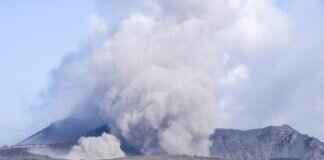Following a long and intricate legal battle, Tahawwur Rana, a key figure in the Mumbai terror attacks and other heinous plots, has finally been extradited to India. This extradition, which comes sixteen years after his initial arrest alongside David Coleman Headley, has been hailed as a significant triumph for Indian investigators, lawyers, and diplomats. Rana is now in the custody of India’s National Investigation Agency (NIA) and is set to face trial on Indian soil. This marks the third instance of an in-person trial in India involving terrorists, following the cases of Ajmal Kasab and Zabiuddin Ansari alias Abu Jundal, who were both implicated in the November 26, 2008 attacks.
The Evidence Against Rana
The case against Rana was meticulously built by U.S. investigators who prosecuted him for his involvement in the Mumbai attacks, as well as for planning an attack in Copenhagen and his ties to the Lashkar-e-Taiba (LeT) terrorist organization. Despite being acquitted in the U.S. case, Rana now faces the weight of the evidence against him in India. The evidence primarily revolves around three key pillars. Firstly, Rana’s actions in terms of funding and sheltering Headley, aiding him in obtaining Indian visas and tickets, and fabricating a false identity for him within his travel and immigration agency until 2009. Secondly, Headley’s testimony, provided as part of a plea bargain, implicates Rana in the 26/11 conspiracy dating back to 2006. Lastly, intercepted conversations between Rana and Headley, including a crucial meeting in Dubai in September 2008, further cement the case against him.
The Pakistan Connection
Rana’s extradition has also shed light on the intricate web of connections between him, Pakistan, and the terrorist activities he was involved in. Despite attempts by Pakistan’s Foreign Office to distance themselves from Rana by highlighting his Canadian citizenship, his roots in Pakistan’s Punjab province and his interactions with the Pakistani military raise questions. Rana’s claim that Headley would clear his records using his connections within Pakistan adds a layer of complexity to the narrative. Throughout the trial in India, the question remains whether Rana can establish a more direct link between Pakistan and the 26/11 conspiracy.
The Trial in Pakistan
While Pakistan initially showed willingness to cooperate in the 26/11 case and gathered crucial evidence linking the attacks to LeT commanders, subsequent developments have seen a noticeable drop in its commitment to pursuing the case. Despite early promises of collaboration, Pakistan’s government has seemingly backed away from implicating key LeT figures, including Hafiz Saeed. The evidence collected by Pakistan’s Federal Investigation Agency between 2009 and 2013, highlighted by former Director General Tariq Khosa, painted a damning picture of LeT’s involvement in the attacks. However, cooperation between India and Pakistan faltered when it came to matching voice recordings from the operations room in Karachi to key figures like Hafiz Saeed and Zaki-ur-Rehman Lakhvi.
The Role of U.S. Authorities
Amidst the complex web of international relations and intelligence sharing, questions have emerged regarding the extent of U.S. authorities’ knowledge about the attacks and the role of key individuals like Headley. The revelation that Headley was allegedly a “double agent”, working as an informant for the U.S. Drugs Enforcement Agency (DEA) while carrying out LeT missions, adds a layer of intrigue to the narrative. Despite sharing intelligence alerts about potential terror strikes on Mumbai prior to the 2008 attacks, the lack of proactive measures to prevent further incidents raises concerns. The decision not to alert Indian authorities when Headley returned to India post-attacks in 2009, only to be arrested while planning attacks in Denmark, raises questions about the efficacy of intelligence sharing and collaborative efforts in combating terrorism.
In conclusion, Tahawwur Rana’s extradition to India marks a significant milestone in the quest for justice for the victims of the Mumbai terror attacks. As the trial unfolds in India, the intricate connections between Rana, Pakistan, and the broader terrorist network stand to be further illuminated. The role of U.S. authorities and the complexities of intelligence sharing in combating global terrorism continue to be subjects of scrutiny and reflection. The pursuit of truth and accountability in the face of such heinous acts remains a collective endeavor that transcends borders and jurisdictions, underscoring the importance of international cooperation in the fight against terrorism.














